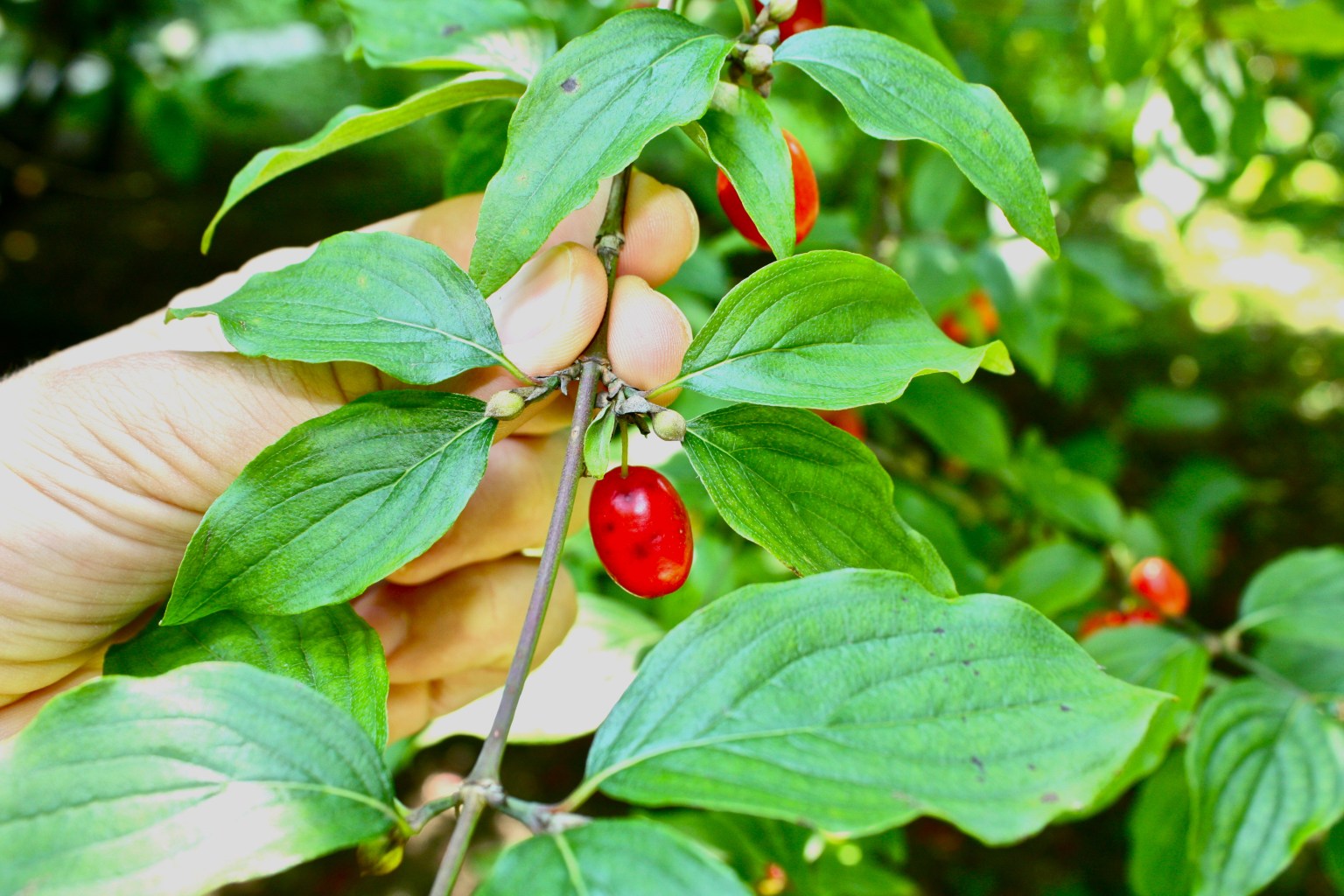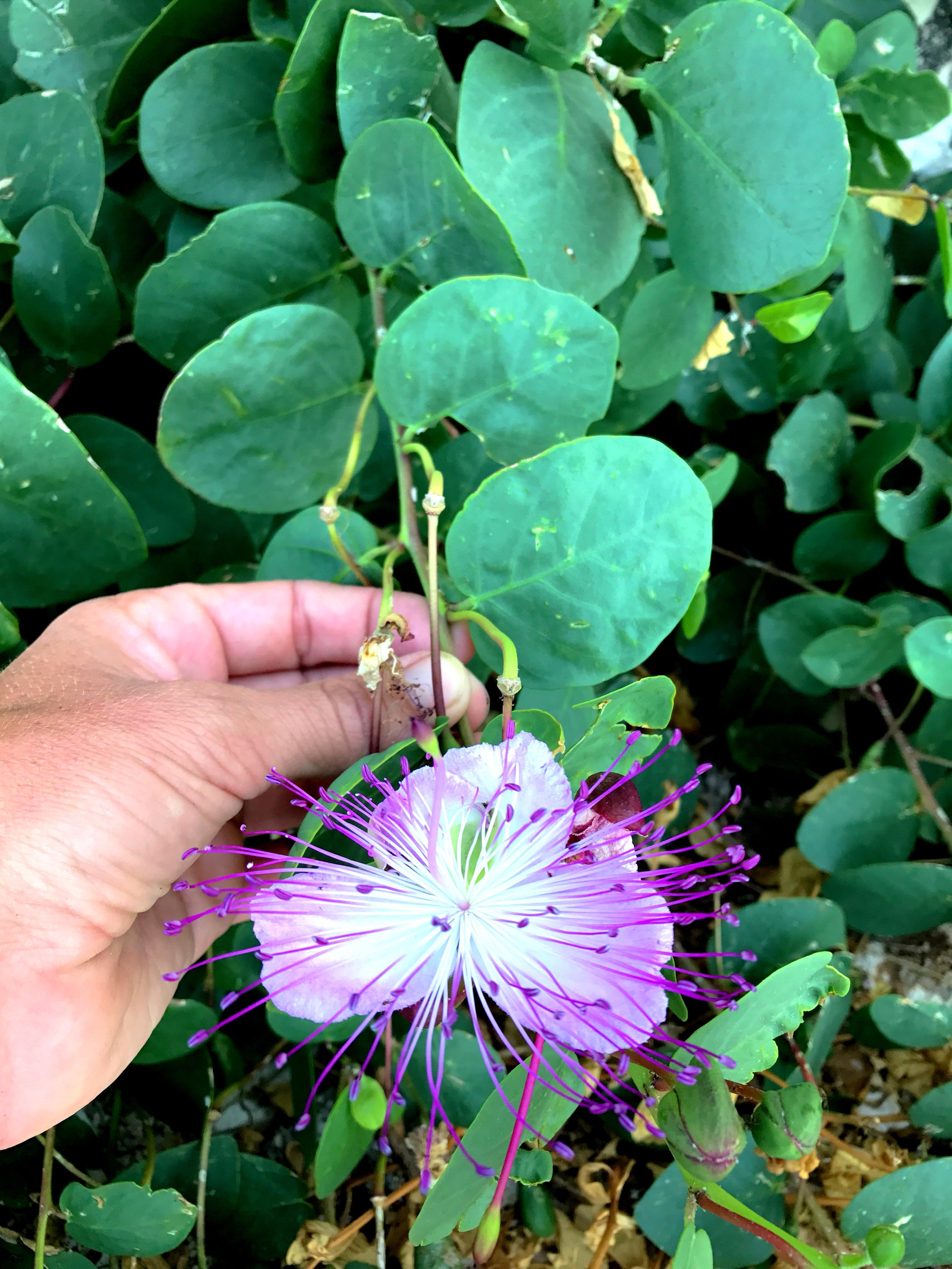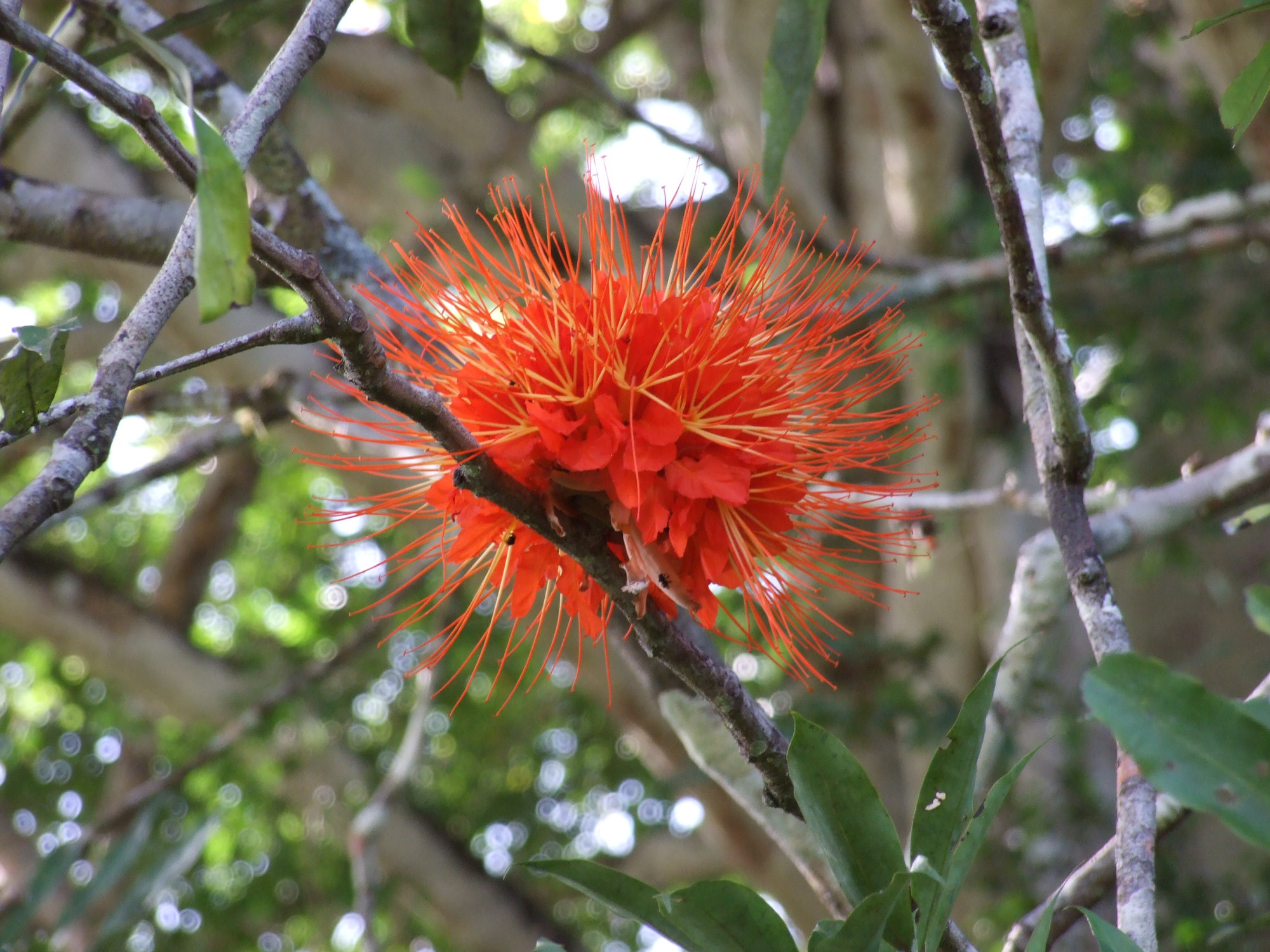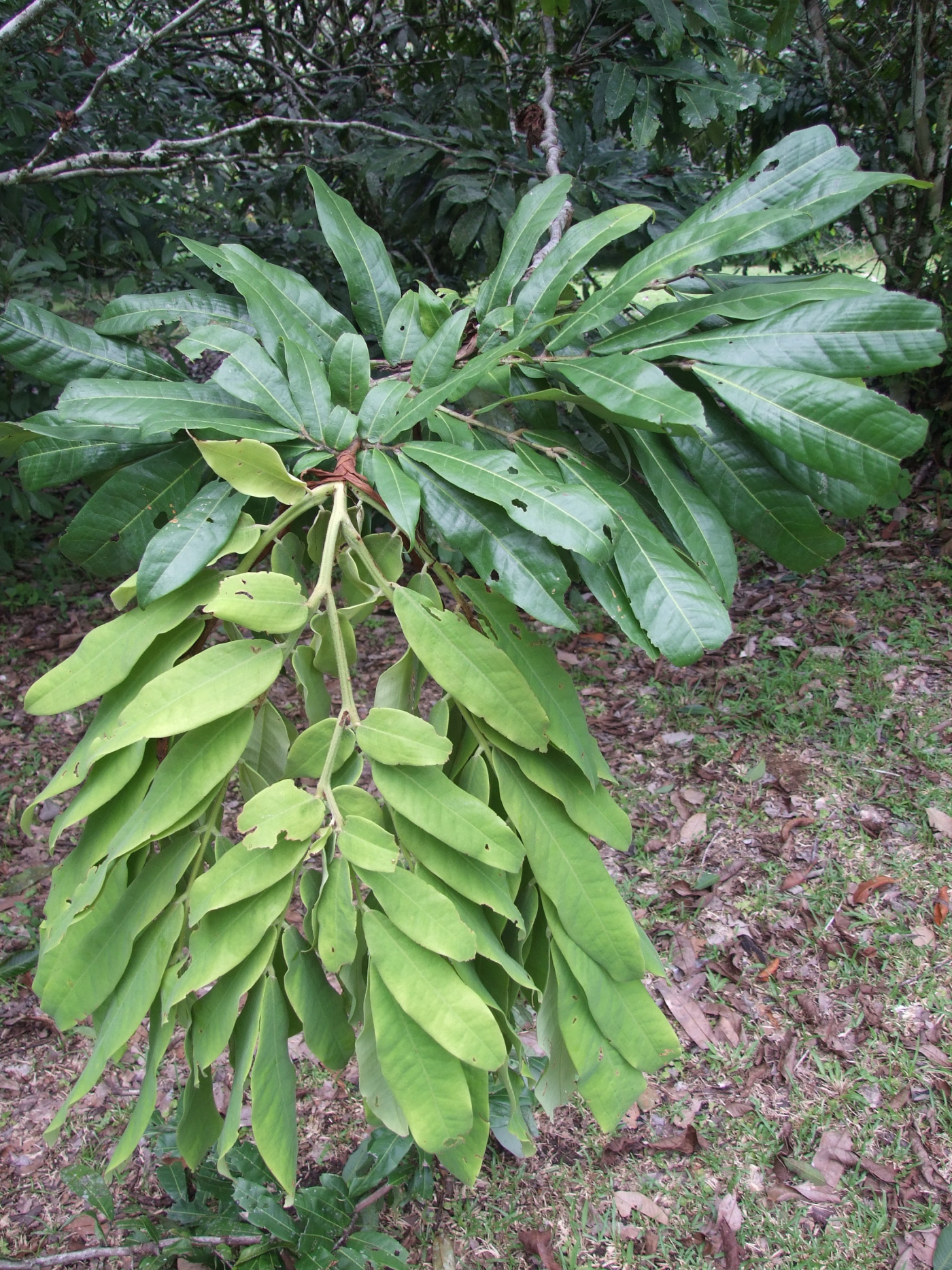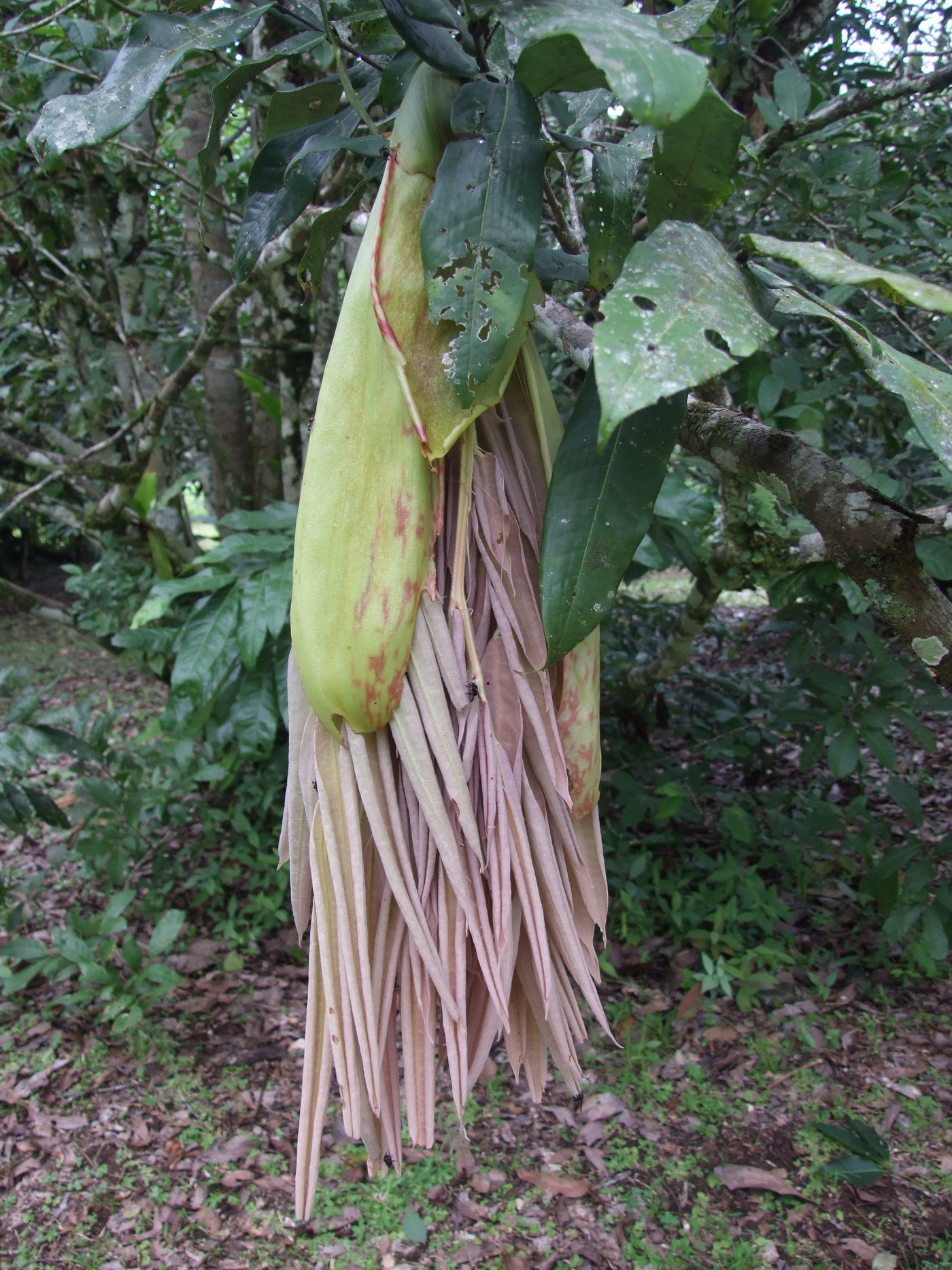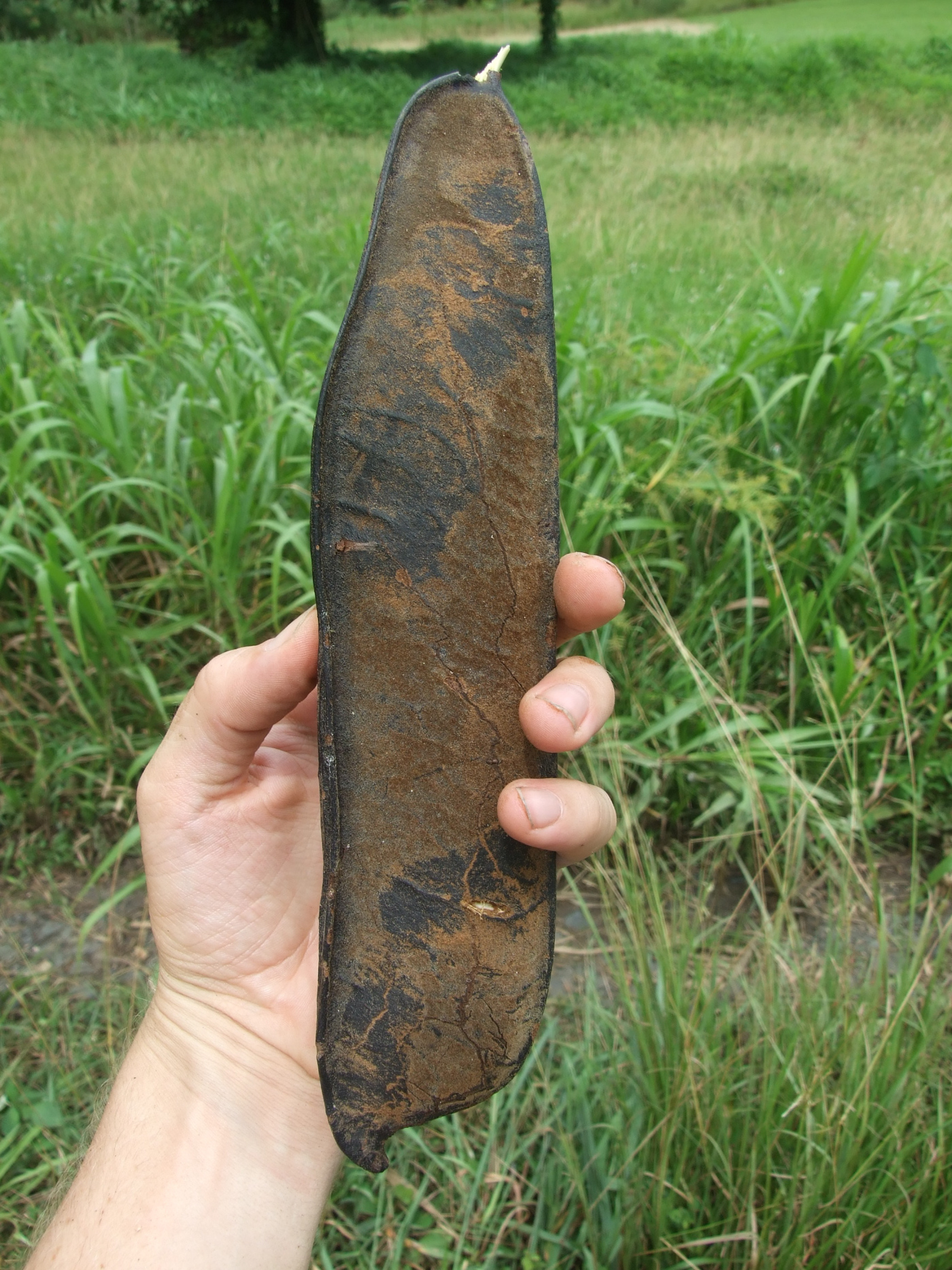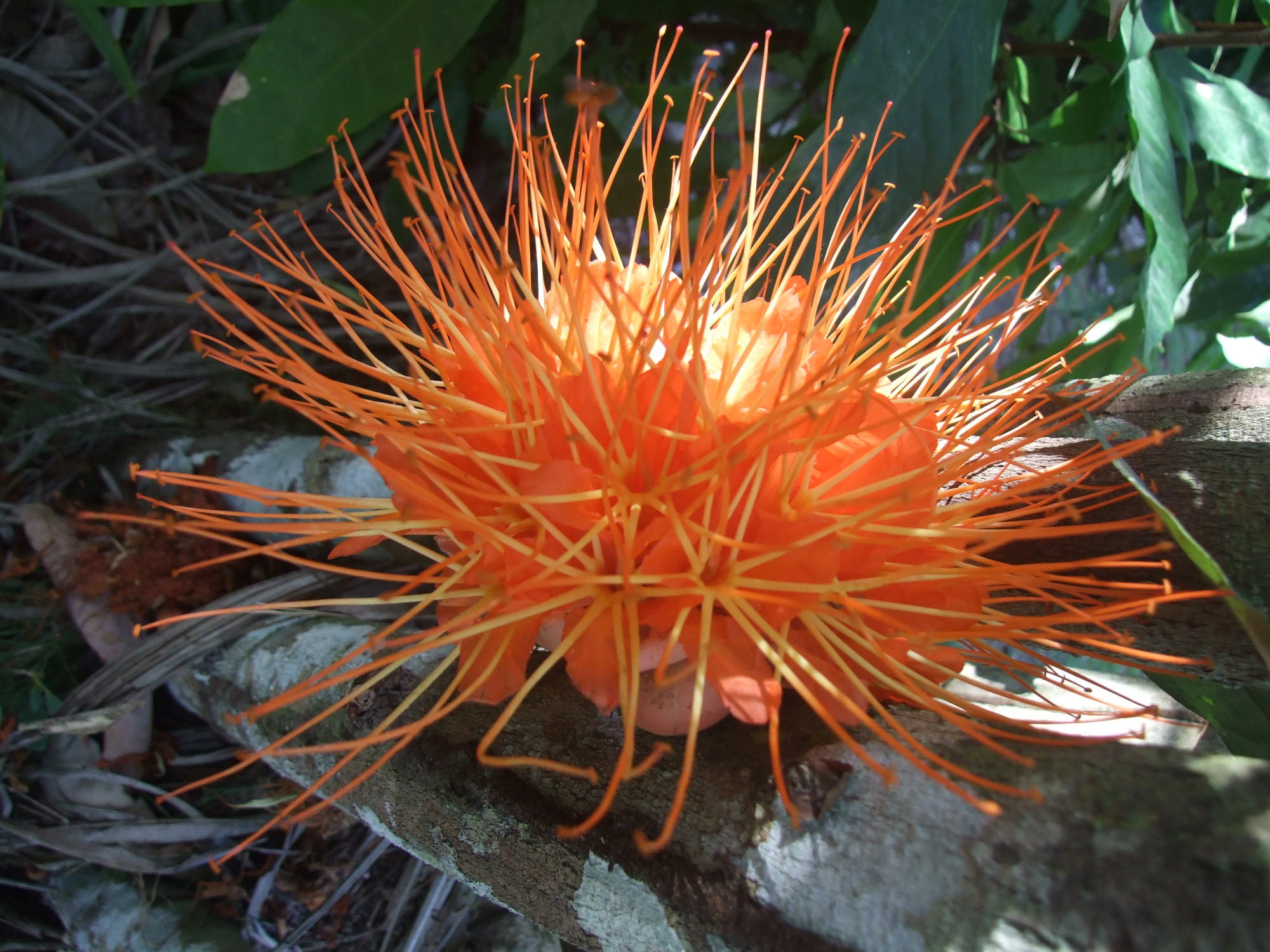Here are some photos of Jatropha chamelensis and endangered / endemic to the chamela-cuixmala biosphere reserve in Jalisco Mexico. The bark is very similar to another tree in the area, also called papelillo amarillo, Jatropha sympetalla. There is not much information available on J. chamelensis. Click photos to enlarge.
Averrhoa carambola - Starfruit, carambola
ORIGIN AND DISTRIBUTION
The Starfruit is from Malaysia and Indonesia, now common throughout tropical Asia and the neo-tropics. Most of the world’s commercial cultivation occurs in Brazil, the West Indies, and Malaysia.
USES AND ETHNOBOTANY
The fruit, as the name would suggest, is shaped like a star. There are multiple varieties of Starfruit, both sweet and sour. Sweet varieties tend to be lighter in color and smaller, about five inches long and three inches wide. Sour varieties are larger and more orange in color.
Starfruit is especially rich in Vitamins A, B, C, phosphorus and calcium. The vitamin C content is comparable to that of an orange. Each fruit contains between 8 – 10 % sugar.
In addition to the fruit the flower and leaves are edible.
PROPAGATION AND CULTIVATION
Starfruit can be propagated easily from seed. Germinate seeds in a well drained soil mix. Trees are often grafted to preserve selected varieties. The grafted carambola can be quite small, compact and heavily bearing, usually no larger then 12 m high. Grafted trees will begin to bear fruit when just a few feet tall. Grafted trees can be managed at four meters and, in favorable conditions, bear so much fruit the branches will break if they aren’t harvested.
Averrhoa bilimbi - Bilimbi
ORIGIN AND DISTRIBUTION
Averrhoa bilimbi ripe fruit.
The Bilimbi originated in Indonesia and is now dispersed throughout the tropics although still not very common.
USES AND ETHNOBOTANY
In the Philippines, where it is commonly found in backyards, the fruits are eaten either raw or dipped in rock salt. It can be either curried or added as a souring agent for common Filipino dishes such as sinigang and paksiw. The uncooked bilimbi is prepared as relish and served with rice and beans in Costa Rica. In the Far East, where the tree originated, it is sometimes added to curry. Bilimbi juice (with a pH of about 4.47) is made into a cooling beverage. In Indonesia, it is added to some dishes, substituting for tamarind or tomato.
Additionally, the fruit can be preserved by pickling, which reduces its acidity. The flowers are also sometimes preserved in sugar.
Leaves of young Bilimbi seedling.
In another part of Indonesia, Aceh, it is preserved by sun-drying. The sun-dried bilimbi is called asam sunti. Bilimbi and asam sunti are popular in Acehnese cuisine. It can replace mango in making chutney. In Malaysia, it also is made into a rather sweet jam.
In Kerala and Bhatkal, India, it is used for making pickles and to make fish curry, especially with Sardines, while around Karnataka, Maharashtra and Goa the fruit is commonly eaten raw with salt and spice. In Guyana, it is made into achars/pickles too.
In Seychelles, it is often used as an ingredient to give a tangy flavor to many Seychellois creole dishes, especially fish dishes. It is often used in grilled fish and also (almost always) in a shark meat dish, called satini reken. It is also used to make a delicious sauce for grilled ,that consists of chopped onion, chopped tomato ,chopped chili and cooked on low heat. It is a must in our local white fish broth " bouyon blan" When in season we also curred them with salt to be used when it is not available. (Source)
For most people, the Bilimbi is too acidic to be eaten raw, it is more commonly used in the preparation of marmalades, jellies, cooked with meat and fish, and used to make vinegars and juices. Many medicinal properties are attributed to Bilimbi (for colds, inflammation of the eyes and intestines, among others). The fruit can also be used to clean copper and iron due to its high content of calcium oxalate.
Bilimbi is a good source of vitamin C, calcium, phosphorous and iron.
PROPAGATION AND CULTIVATION
The Bilimbi can be propagated easily from seed. As with Averrhoa carambola (starfruit), and many other tropical species, the seed can benefit from 24 hrs in their lightly fermenting fruit prior to sewing for germination. Bilimbi is less resistant to cold and drought than Starfruit. It is not particular to soil type but it won’t grow well higher than five hundred meters above sea level.
The Bilimbi typically begins to produce after four years of growth and continues to bare fruit year round, although I have gotten fruit from two year old seedling trees.
Elaeagnus x ebbingei - Silverberry, Oleaster
BACKGROUND, ORIGIN AND DISTRIBUTION
Elaeagnus x ebbingei, commonly called oleaster or Ebbing's silverberry, is from temperate / subropical Areas of Asia. It is a cross between Elaeagnus macrophylla x Elaeagnus pungens. It is a large, bushy, rounded shrub that typically grows to 8-10' tall and as wide. Branchlets lack spines. Leaves are evergreen in warm winter climates, but semi-evergreen to deciduous near the northern edge of its growing range.
USES AND ETHNOBOTANY
The seeds can be eaten raw or cooked and are a good source of protein and fats. The fruit is edible, somewhat astringent until fully ripe (almost falling off), then very good and produced in large quantities. Fruits ripen in the middle of winter when few other fruit are available. Fruit will grow to be 3 cm long by 1 cm wide when ripe.
The fruit of all Elaeagnus species are a rich source of vitamins and minerals, especially vitamins A, C and E, flavinoids and other bio-active compounds. The fruit is also a good source of fatty acids, which is unusual for fruit.
Reportedly, current research indicates that consumption of the fruit greatly reduces the incidence of cancer in humans. Not only that but the compounds in the fruit are possibly capable of slowing or even reversing the growth of cancers that are already in the body.
Flowers are inconspicuous but emit a very agreeable aroma.
PROPAGATION, CULTIVATION AND USE IN SUSTAINABLE FOOD SYSTEMS
The plant is nitrogen fixing, meaning its roots have a symbiotic relationship with certain soil bacteria which form nodules on the roots of the plant and fix atmospheric nitrogen. Some of this nitrogen is used by the plant itself for its own growth, however some of the nitrogen is also available for plants growing nearby. Thus, planting E. ebbingei near other food crops can improve growth and increase productivity.
Due to the versatility of this plant, it has a wide range of uses for use in regenerative agriculture, permaculture, and agroforestry systems. It can grow in full sun or shade and can handle hot dry summers.
Elaeagnus can have a vine-like growth habit, especially when growing in the understory of a larger tree. Prune back annually to keep the plant contained as a dense hedge or shrub, the plant can take heavy pruning and produces abundant biomass.
Elaeagnus is very wind tolerant and can be utilized as a superior windbreak. It is also highly salt tolerant. It can be heavily pruned as a hedge or let to grow freely, reaching 5 m in height.
I have planted this species in temperate Europe and the Mediterranean Basin, as well as in California, its a tough shrub with with many diverse uses. I believe Elaeagnus ebbingei has major potential for use in sustainable agriculture systems and deserves further investigation, selection and development of superior fruit / seed varieties.
Amaranthus blitum - Purple Amaranth, Guernsey pigweed
ORIGIN AND DISTRIBUTION
Native to the Mediterranean Basin region, it is naturalized in other parts of the world, including much of eastern North America and Africa.
A. blithum grows in many regions of the world, most notably mediterranean, tropical and subtropical parts of the world. This species is found in central and western parts of Kenya in wet areas, on waste ground and in cultivated land.
The Greeks call the Amaranthus blitum var. silvestre, vlita (Modern Greek: βλίτα), and eat the leaves and the tender shoots cooked in steam or boiled and then served with olive oil, lemon and salt. Similarly, it is also picked as young shoots in Lebanon and cooked in olive oil, onion, chilli, and burghul, seasoned with salt and drizzled with lemon juice before eating with pita bread. It is considered a side dish and particularly popular in the north of Lebanon.
USES AND ETHNOBOTANY
Leaves and young shoots are used as a vegetable. This is an important leafy vegetable in tropical and subtropical areas of Kenya and a popular species in traditional homegardens and sold in open markets.
PROPAGATION AND CULTIVATION
The plant can be propagated easily by broadcast seeding. In favorable conditions it can become naturalized and is most likely considered invasive in some areas. But as a highly nutritious edible leafy green, perhaps that's not such a bad thing.
Aerva lanata (L.) Schultes
BACKGROUND, ORIGIN AND DISTRIBUTION
Francisco Manuel Blanco (O.S.A.) - Flora de Filipinas [...] Gran edicion [...] [Atlas II].[1]
Widespread in the tropics and subtropics of the world, from West Africa to Egypt and south to South Africa. Widespread in Kenya in open grassland, seasonally waterlogged areas, roadsides, forest edges and rocky areas.
USES AND ETHNOBOTANY
Leaves are eaten as a vegetable in parts of East Africa (Giriama, Duruma, Chonyi).
Medicinally a decoction of the leaves is used for bating babies suffering from Malaria. The whole plant is also used as a chicken feed (Digo) and the white wool from the plant is used for stuffing pillows (Tharaka)
Crithmum maritimum - Rock Samphire, Samphire
Cornus mas - European Cornel
ORIGIN AND DISTRIBUTION
Cornus mas is a species of flowering plant in the dogwood family, native to S. Europe and Southwest including Armenia, Azerbaijan, Georgia, Iran, Turkey, Israel, Lebanon and Syria.
USES AND ETHNOBOTANY
The fruit tastes like something between a sour cherry and cranberry, turns dark red when ripe. The fruit is used to make jams, sauces (similar to cranberry sauce). In Montenegro I found concentrated juice sold in the market.
The fruits when ripe on the plant bear a resemblance to coffee berries, and ripen in mid- to late summer. The fruit is edible (mainly consumed in Eastern Europe, UK, and Iran), but the unripe fruit is astringent. The fruit only fully ripens after it falls from the tree. When ripe, the fruit is dark ruby red or a bright yellow. It has an acidic flavour which is best described as a mixture of cranberry and sour cherry; it is mainly used for making jam, makes an excellent sauce similar to cranberry sauce when pitted and then boiled with sugar and orange, but also can be eaten dried. In Azerbaijan and Armenia, the fruit is used for distilling vodka, in Austria and German Alps is used for distilling Dirndlbrand, in Albania and Bosnia and Herzegovina it is distilled into raki, and in Greece cranberries are used to make home-made liqueur. In Turkey and Iran it is eaten with salt as a snack in summer, and traditionally drunk in a cold drink called kızılcık şerbeti. Cultivars selected for fruit production in Ukraine have fruit up to four cm long. It is eaten in Eastern Europe in many ways including as a medicine. It is very high in vitamin C and is used to fight colds and flus.
The fruit of C. mas (together with the fruit of C. officinalis) has a long history of use in traditional Chinese medicine. Known as shan zhu yu, 山茱萸, it is used to retain the jing, essence, to tonify the kidneys, and in cases of spermatorrhea.
PROPAGATION AND CULTIVATION
Cornus mas can be propagated from seed. The seed must be separated from the fruit flesh since this contains germination inhibitors. Stored seed should be cold stratified for 3 - 4 months and sown as early as possible in the year. Scarification may also help as may a period of warm stratification before the cold stratification. Germination, especially of stored seed, can be very slow, taking 18 months or more.
C. mass can also be propagated from cuttings of half-ripe side shoots. Cuttings of mature wood of the current year's growth, taken with a heel if possible, autumn in a cold frame. New growth can also be air airlayered.
I took this photo in the Ljubljana botanical garden
Capparis spinosa - Caper
ORIGIN AND DISTRIBUTION
Native to Europe - Mediterranean to E. Asia - Himalayas.
USES AND ETHNOBOTANY
The flower buds are pickled and used as a flavoring in sauces, salads etc. The young fruits and tender branch tips can also be pickled and used as a condiment. The flower buds are harvested in the early morning and wilted before pickling them in white vinegar. Young shoots can be cooked and used like asparagus.
In Greece caper leaves are eaten in addition to the pickled buds. The leaves can be similarly pickled or boiled and preserved in jars with brine. Caper leaves are excellent in salads and fish dishes. Dried caper leaves are also used as a substitute for rennet in the manufacturing of high quality cheese.
Capparis fruit, not yet mature.
The root-bark is analgesic, anthelmintic, antihaemorrhoidal, aperient, deobstruent, depurative, diuretic, emmenagogue, expectorant, tonic and vasoconstrictive. It is used internally in the treatment of gastrointestinal infections, diarrhea, gout and rheumatism. Externally, it is used to treat skin conditions, capillary weakness and easy bruising. The bark is harvested in the autumn and dried for later use. The stem bark is bitter and diuretic. If taken before meals it will increase the appetite. The unopened flower buds are laxative. They are used internally in the treatment of coughs, and externally to treat eye infections. The buds are a rich source of compounds known as aldose-reductose inhibitors - it has been shown that these compounds are effective in preventing the formation of cataracts. The buds are harvested before the flowers open and can be pickled for later use - when prepared correctly they are said to ease stomach pain. A decoction of the plant is used to treat vaginal thrush. The leaves are bruised and applied as a poultice in the treatment of gout.
PROPAGATION AND CULTIVATION
Capers can be propagated easily from seeds sewn in a well drained soil. Allow 2-4 weeks until germination.
Capparis spinosa on rock wall.
Caper is a rupicolous species, meaning it thrives among and/or inhabits rocks. It is widespread on rocky areas and is grown on a wide range of different soil associations, including alfisols, regosols and lithosols. C. spinosa can tolerate both silty clay and sandy, rocky or gravelly surface soils, with less than 1% organic matter. It grows on bare rocks, crevices, cracks and sand dunes in Pakistan, in dry calcareous escarpments of the Adriatic region, in dry coastal ecosystems of Egypt, Libya and Tunisia, in transitional zones between the littoral salt marsh and the coastal deserts of the Asian Red Sea coast, in the rocky arid bottoms of the Jordan valley, in calcareous sandstone cliffs at Ramat Aviv, Israel, and in central west and northwest coastal dunes of Australia. It grows spontaneously in wall joints of antique Roman fortresses, on the Wailing Wall, and on the ramparts of the castle of Santa Bárbara (Alicante, Spain). Moreover, this bush happens to grow in the foothills of the southern Alps (Verona, Italy) and is a common species on city walls in Tuscany (Italy) and on bastions of Mdina and Valletta (Malta). Clinging caper plants are dominant on the medieval limestone-made ramparts of Alcudia and the bastions of Palma (Majorca, Spain).
Capparis spinosa in its native habitat on coastal, exposed limestone rocks, Ionian Islands, Greece.
Brownea macrophylla - Rosa del monte
ORIGIN AND DISTRIBUTION
Native to South America - Peru, Ecuador, Colombia, Venezuela; C. America - Panama.
Typically found growing as an understory tree in the rainforest, often subject to periodic inundation.
USES AND ETHNOBOTANY
In the Darien region of Panama the bark of Brownea is boiled in water to make tea used to treat diarrhea. The flower is considered to be "from the devil" and infused in water used for ritual baths.
PROPAGATION AND CULTIVATION
Brownea can be grow easily from the large brown seeds. Some literature states that Brownea seed has a semi-hard seed coat and benefits from light scarification before sowing in order to speed up and improve germination, however I have never found this to be the case. Germinate fresh seeds in a compost rich, well drained soil mix and results should be good. Seeds to not have a very long viability.
Brownea macrophylla is native to the moist tropics, it cannot tolerate frosts. Trees prefer a position in partial shade requiring moist soil and dense deep, rich, slightly acid soil. Trees are slow growing and, if happy, will flower when three to four year olds from seed.
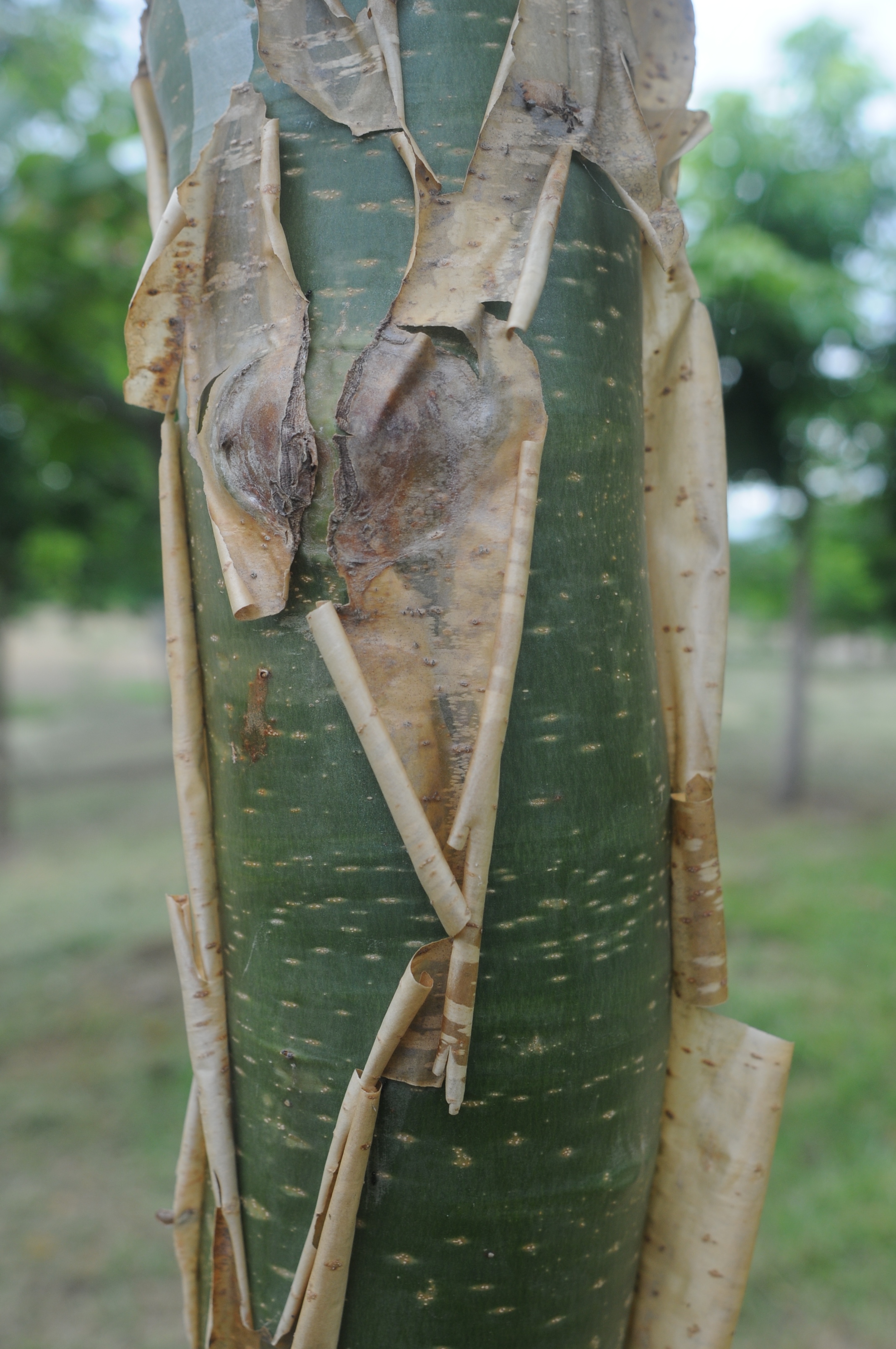
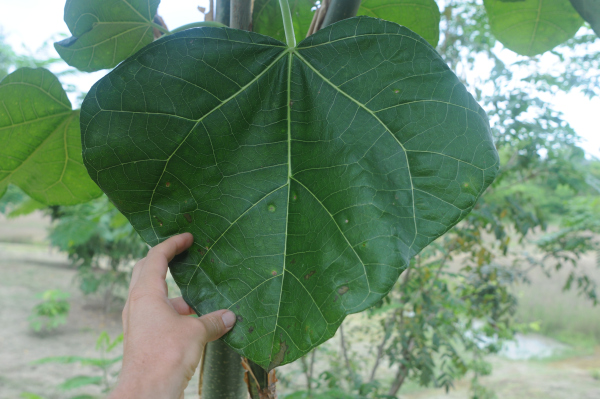

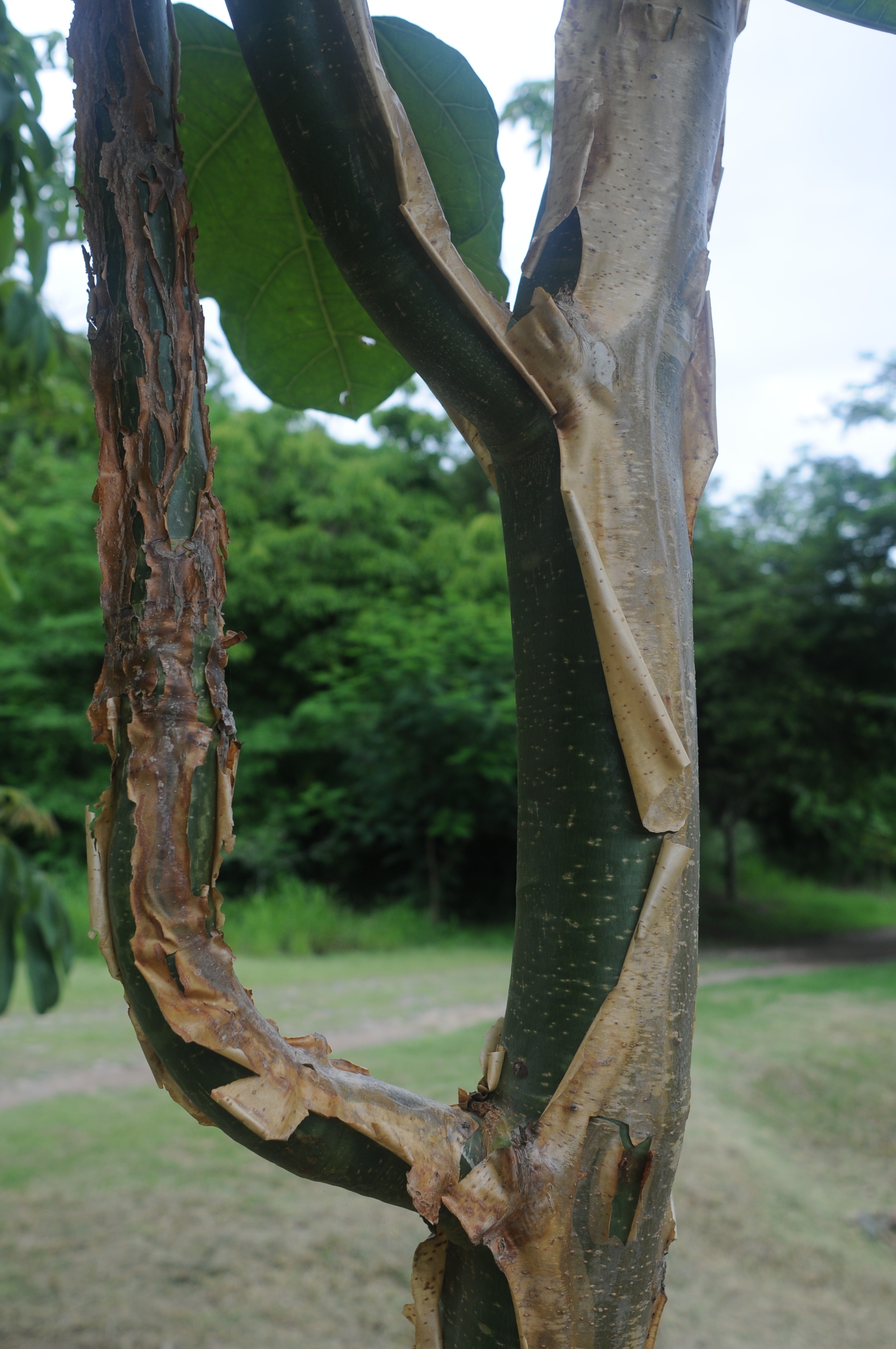



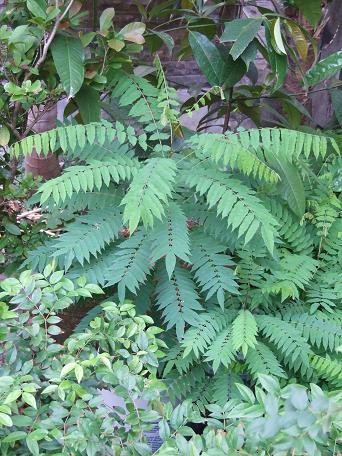

![Francisco Manuel Blanco (O.S.A.) - Flora de Filipinas [...] Gran edicion [...] [Atlas II].[1]](https://images.squarespace-cdn.com/content/v1/5a5f182cbe42d619379891ca/1518250853855-62QMI9ZTBXKVWKR01YCY/Aerva+lanata.png)

